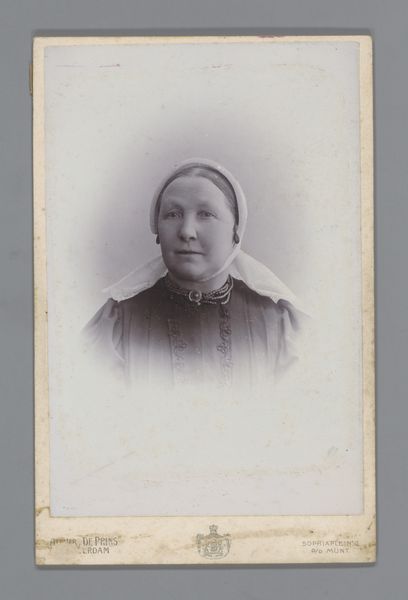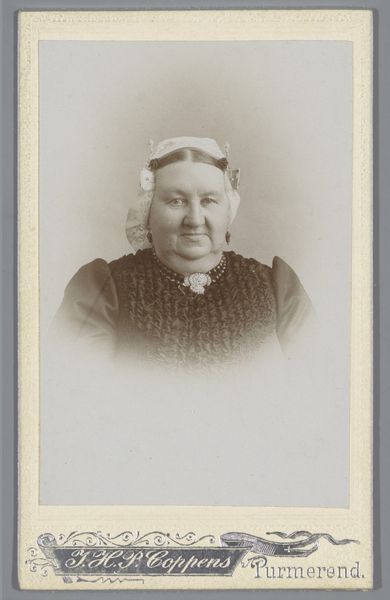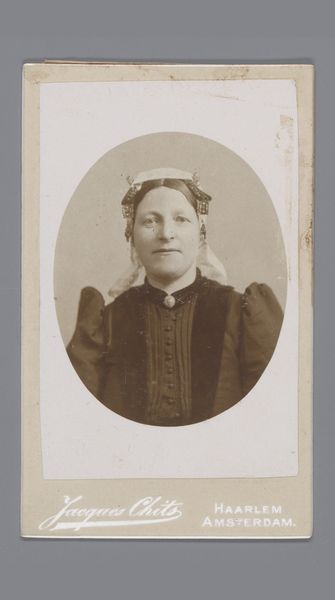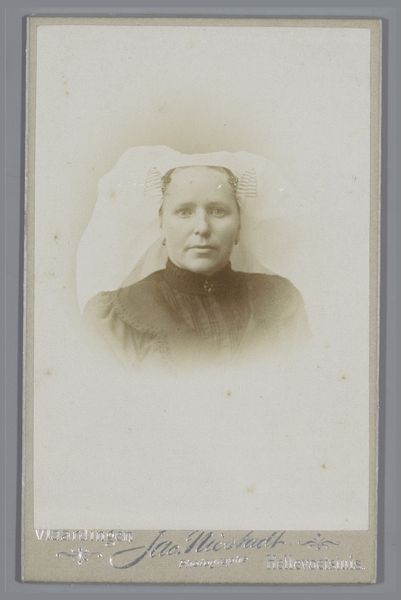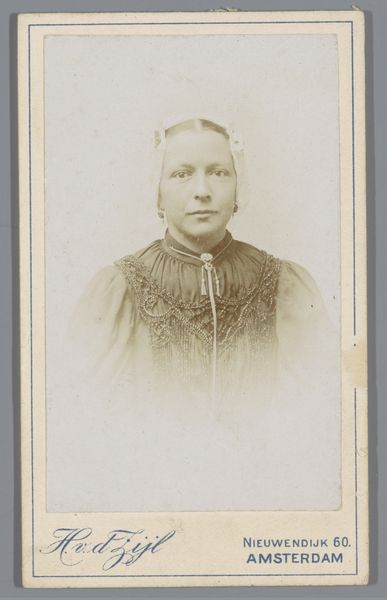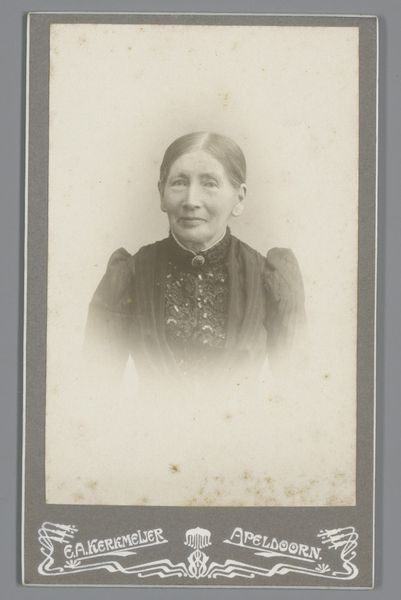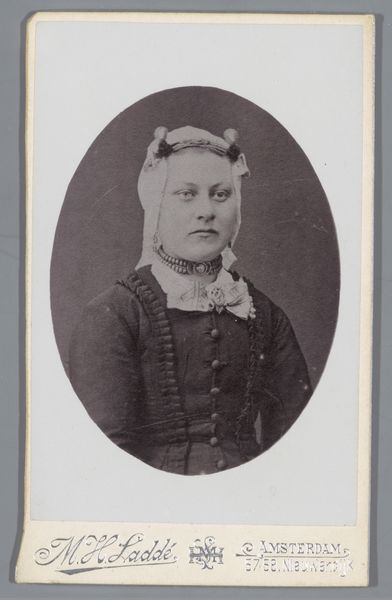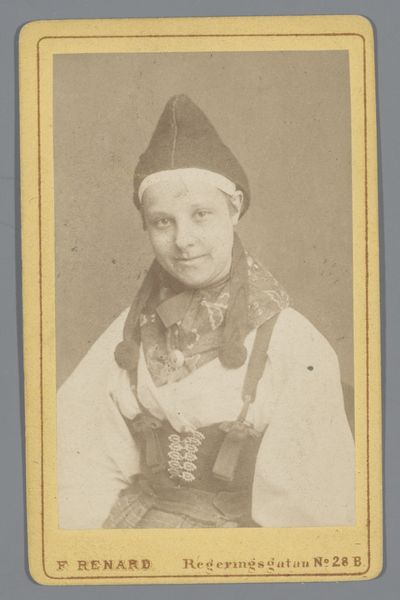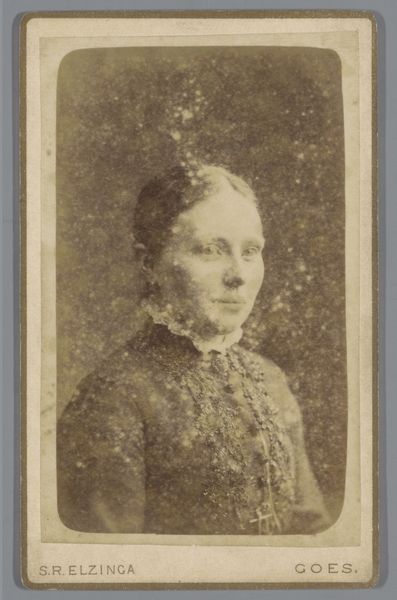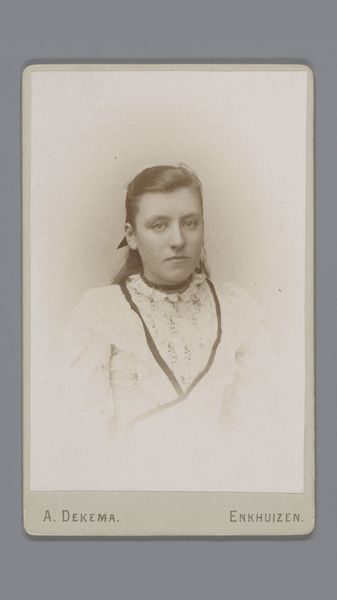
photography
#
portrait
#
photography
#
coloured pencil
#
realism
Dimensions: length 106 mm, width 64 mm
Copyright: Rijks Museum: Open Domain
Editor: So, this is Machiel Hendricus Laddé’s "Portrait of Neeltje Kelderman," dated between 1892 and 1906. It's a photograph that almost looks like a drawing with coloured pencil, now housed in the Rijksmuseum. There's something incredibly direct about her gaze, and the detail in her clothing is amazing. What do you see in this piece? Curator: Her headdress and elaborate neckline certainly speak to the cultural identity Laddé intended to portray. The symbols within the embroidery; the specific cut and style of the cloth - all carry meaning that would have been instantly recognizable to viewers of the time. Does the image evoke any immediate emotional response within you? Editor: I find her very dignified. And a bit stern, maybe. The framing is quite traditional. I mean, it’s a straightforward portrait. Does her clothing give a clue as to where she’s from, or her status? Curator: Precisely. The headdress particularly is fascinating. Think of it not just as adornment but as a powerful emblem, perhaps of regional identity, religious belief, or even marital status. Visual symbols condense cultural information into accessible forms. Does that resonate with you? Editor: It does, actually! It makes me consider what symbols we wear today - a logo, for instance. What story does Laddé want to tell about her? Curator: I see an intention to immortalize a certain type of Dutch womanhood, one rooted in tradition and perhaps quiet strength. This image becomes part of the collective visual memory of the Netherlands. We build ideas around it, creating assumptions about who she was. But does this single portrait capture the nuances of her being? Or is it something else? Editor: I guess it’s impossible to know the real Neeltje, but the photograph preserves something of her. Curator: Indeed. And in that preservation, it opens pathways for us to contemplate identity, representation, and the enduring power of images. Thanks for bringing it to life. Editor: Thanks to you; I will never look at a portrait the same way again.
Comments
No comments
Be the first to comment and join the conversation on the ultimate creative platform.
